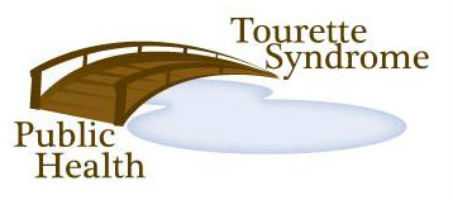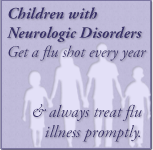Tourette Syndrome and Public Health: Bridging the Gap
Tourette syndrome (TS) is a neurological condition that causes people to have tics, which are sudden twitches, movements, or sounds that people do repeatedly. The symptoms can vary from mild to severe, and change over time. Many people who have TS also have other mental, emotional and behavioral (MEB) conditions at the same time. The most common ones are attention-deficit/hyperactivity disorder (ADHD) and obsessive-compulsive disorder.
There are substantial healthcare costs for people living with TS. Children with TS often need many healthcare visits, special educational services, medication, and psychological and behavioral counseling. TS can have wide-ranging effects on children’s physical, mental, and emotional well-being, and can negatively affect their health, education, employment, family and friendships.
Because of the wide-ranging effects, TS is a public health concern, and CDC is working to learn more about TS and to improve the health and well-being of people with TS. Learn about what CDC and public health can do to bridge the gaps in knowledge towards helping individuals with Tourette syndrome.
What we know about TS
- At least 148,000 children in the United States have been diagnosed with TS
- Boys are 3 times more likely than girls to have TS
- 4 out of 5 children with TS have a co-occurring MEB condition
What we don’t know about TS
- The exact number of people who have TS, because many have the condition but don’t know about it
- The public health impact, including cost, of TS
- The best ways to treat TS and co-occurring MEB conditions
What public health can do to help individuals with Tourette syndrome

The first step is to better understand the public health impact of TS and other tic disorders because public health researchers do not know exactly how many people are living with a tic disorder. TS symptoms are not always well recognized, so some people with TS do not get diagnosed early enough to receive the right kind of treatment. It is estimated that only half of children with TS have a diagnosis. Researchers also do not know why the severity and course of tic symptoms and MEB conditions vary widely in people with TS. Even when tic severity decreases by early adulthood, MEB conditions can continue to impact a person’s life, particularly if the affected person is not diagnosed or treated.
A public health approach for TS and tic disorders seeks answers to these questions and helps develop and evaluate strategies to improve the health and well-being of people with TS. Therefore, CDC reviewed the literature and organized an expert panel to identify gaps in helping individuals with TS that can be filled by public health efforts. The expert panel included neurologists, psychologists, epidemiologists, a psychiatrist, a nurse practitioner in child psychiatry, a parent, and representatives from the Tourette Association of America. You can read the full report for the panel here. Two main topics emerged: understanding the numbers and educating the public.
Understanding the numbers
Research to determine exactly how many people have TS, and what factors increase the risk for also having co-occurring MEB conditions, can ultimately lead to a better understanding of TS. Public health research will fill gaps in our knowledge by
- Improving how tic disorders, including TS, are defined and measured to improve our understanding of how many people have TS, particularly among minority and underserved populations;
- Understanding how symptoms appear, change, and become more or less severe over time;
- Determining whether tics can be used as an early predictor for the development of MEB or other neurobehavioral disorders;
- Documenting the impact that tic disorders, including TS, and co-occurring MEB conditions can cause in different aspects of life (e.g., family, social relationships, education, economic) and across the lifespan; and
- Identifying factors that relate to better or worse health outcomes among people with TS.
Understanding TS better will help
- Public health professionals plan strategies to prevent the negative effects of TS or co-occurring MEB conditions;
- Healthcare professionals provide diagnostic and treatment services when needed; and
- Policy makers focus their efforts to make sure that systems are in place so that people with TS are receiving needed services
Educating the public
Education and outreach activities at both the community and national level provide information about TS and other tic disorders. Programs are needed for health and education professionals, and for individuals with TS and their families in order to give them information on the diagnosis and treatment of TS and other tic disorders. Education is needed to reduce stigma and improve access to care; help ensure that the diagnosis is made in a timely fashion; and ultimately help children with TS lead healthy and productive lives. CDC and other partners work to improve the health and well-being of people with TS by
- Increasing awareness and understanding of TS among health and education professionals and the public;
- Developing and disseminating information and materials for health professionals based on the best evidence about care for people with TS; and
- Identifying and managing symptoms early.
Bridging public health and TS: The National Center on Birth Defects and Developmental Disabilities
Strong partnerships are critical to the work being done by the National Center on Birth Defects and Developmental Disabilities (NCBDDD) on TS. NCBDDD’s work will result in more effective efforts to ensure that people with TS and other tic disorders reach their full potential. Currently NCBDDD is working to address the public health needs for TS by
- Partnering with the Tourette Association of America to provide health education and training to physicians, nurses, social workers, educators, and the public about TS and related disorders;
- Funding four sites as part of the Project to Learn about Youth Mental Health (PLAY-MH), a community study on the prevalence and treatment patterns of externalizing, internalizing, and tic disorders in school-aged children;
- Funding the development of a validated screening tool to improve identification of children with tics;
- Funding an update of the Diagnostic Interview Schedule for Children, a diagnostic interview for mental, emotional and behavioral disorders, including TS;
- Using data from the 2007 and 2011 National Survey of Children’s Health (NSCH), to document the prevalence and impact of TS (including healthcare, parenting, and education) on children in the United States;
- Analyzing data on symptom onset, diagnostic process, and treatment from the National Survey of the Diagnosis and Treatment of ADHD and Tourette Syndrome (NS-DATA), a follow-up survey of families who reported having a child with ADHD or TS in the 2011-2012 NSCH; and
- Collaborating with researchers at the University of Rochester and the University of South Florida to define the impact of TS on children, their families, and communities.
Public health can improve the lives of individuals with TS and their families, and can help create communities and institutions that support the potential for full, productive living for people with TS. Early and appropriate identification and treatment of TS can limit the negative impact of TS and the co-occurring MEB conditions on individuals, their families and communities.
- Page last reviewed: May 11, 2017
- Page last updated: January 4, 2016
- Content source:



 ShareCompartir
ShareCompartir